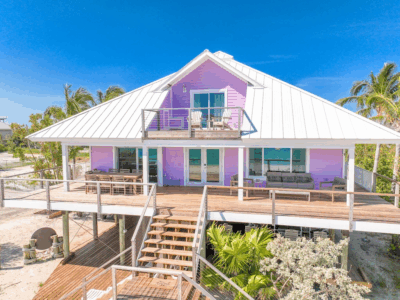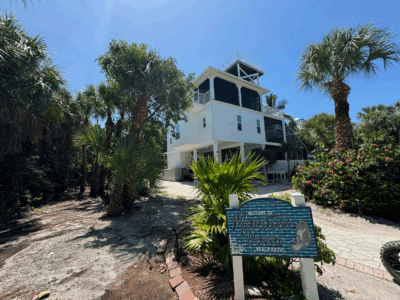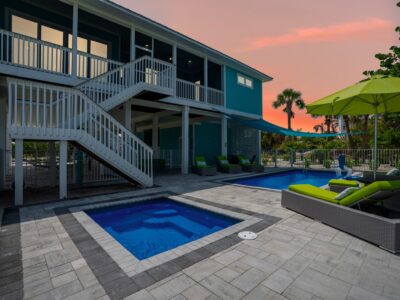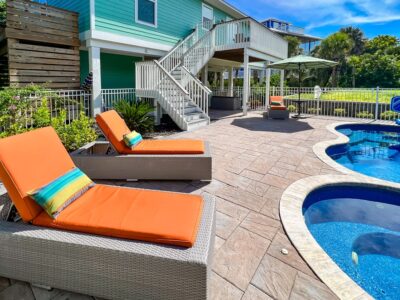All About North Captiva Island Wildlife
Key Takeaways
- North Captiva Island hosts an abundant and diverse wildlife population, including dolphins, manatees, gopher tortoises, and shorebirds.
- The island’s ecosystems support iconic marine and land species vital for ecological balance.
- Responsible wildlife viewing and conservation are central to preserving this pristine environment.
North Captiva Island is a sanctuary for unique wildlife found nowhere else in such harmony. Visitors can expect to encounter playful bottlenose dolphins frequently seen near shorelines and channels throughout the year. From December to March, manatees grace the warmer waters of the island’s canals, offering a rare glimpse of these gentle giants. On land, the gopher tortoise, a keystone species, plays a vital ecological role by maintaining burrows that shelter over 350 other animals. These tortoises are often spotted along sandy paths, adding to the island’s natural charm.
Sea turtles, mainly Loggerhead and Green Sea Turtles, nest on North Captiva’s beaches from April to October. Visitors won’t usually see the turtles themselves, but carefully marked nests highlight critical conservation efforts protecting their hatchlings. Bird enthusiasts find the island a premier destination, with species like ospreys, bald eagles, and a broad range of wading and shorebirds thriving in protected habitats such as the North Captiva State Preserve.For wildlife sightings to remain safe and sustainable, visitors must follow respectful guidelines: never feed animals, keep a safe distance, and observe leave no trace principles. Whether exploring from a kayak or strolling the shore, North Captiva offers unmatched opportunities to connect with Florida’s diverse coastal ecosystems.
Marine Life and Sea Creatures
Bottlenose dolphins patrol the surrounding waters daily, while West Indian manatees frequent the warm shallow from November through March. The waters teem with snook, redfish, tarpon, and sea trout, attracting both recreational anglers and natural predators. Loggerhead sea turtles nest on beaches from April through October, with hatchlings emerging 60 days later.
Bird Species and Migration Patterns
The island serves as a crucial stopover for migratory birds along the Atlantic Flyway. Ospreys nest on platforms from February through July, while roseate spoonbills, white pelicans, and magnificent frigatebirds inhabit the mangroves. Winter brings painted buntings and various warbler species to the maritime hammocks.
Land Animals and Reptiles
Gopher tortoises, a keystone species, burrow throughout the island’s sandy uplands. American alligators inhabit freshwater areas, while black racers control rodent populations. Marsh rabbits and raccoons forage at dawn and dusk along nature trails.
Conservation Efforts
The Captiva Conservation Foundation monitors 115 active gopher tortoise burrows and maintains sea turtle nesting sites. North Captiva Sea Turtle Foundations has volunteers who conduct daily patrols during nesting season, protecting approximately 30-50 loggerhead nests annually from predation and human disturbance.
Iconic Marine Life: Spotting Dolphins and Manatees
North Captiva’s waters host two of Florida’s most beloved marine mammals year-round. Bottlenose dolphins patrol the shallow flats and passes while West Indian manatees graze in warm-water refuges, particularly during winter months when water temperatures drop below 68°F.
Bottlenose Dolphins — Stars of the Sea
Bottlenose dolphins inhabit North Captiva’s coastal waters in pods of 2-15 individuals, hunting for mullet, pinfish, and sea trout in the seagrass beds. These intelligent cetaceans frequent Redfish Pass and Captiva Pass during tidal changes when fish movement peaks. Peak activity occurs during early morning (6-9 AM) and late afternoon (4-7 PM) feeding times. Dolphins surface every 2-3 minutes to breathe, creating distinctive dorsal fin patterns that researchers use for identification.
Gentle Giants — The Manatees of North Captiva
West Indian manatees migrate to North Captiva’s warm-water areas between November and March, with populations concentrated near South Side of Airstrip and the Island Club North Captiva marina. These 1,000-pound herbivores consume 10-15% of their body weight daily in seagrass. Manatees surface for air every 3-5 minutes while active, creating circular ripples called “footprints” on calm water surfaces.
PLEASE NEVER GIVE FRESH OR BOTTLED WATER TO THE MANATEES.
These are endangered animals that are protected by federal and state law.
The Florida manatee (Trichechus manatus latirostris) is a subspecies of the West Indian manatee (Trichechus manatus) that lives in and is native to Florida. Florida manatees are large, gray, aquatic mammals. Adult manatees are typically 9-10 feet long from snout to tail (2.7-3 meters) and weigh around 1,000 pounds (453.6.6 kilograms); however, they may grow to over 13 feet long (4 meters) and weigh more than 3,500 pounds (1587.6 kilograms). At birth, a manatee calf weighs around 60 – 70 pounds. Manatees have two fore-limb flippers that they use for steering movements and to hold vegetation while eating and a large, round, flattened paddle-shaped tail that is used for swimming.
Algae often grows on the backs and tails of manatees, which makes their skin color appear green or brown. Barnacles (found mostly on coastal dwelling manatees) often leave round scars from attachment sites; movement from saltwater to freshwater habitats clears the animals of these saltwater hitchhikers. Nostrils are located above the snout and have valves that tightly close when the manatee is under water. Their small eyes have a membrane that can cover the eyes for protection. The ear openings are small and they have no external lobes. Manatees have a flexible lip pad that is used to move food into their mouth. Manatees have back teeth (molars) for chewing but no frontal teeth. Teeth are continuously lost and re-grown throughout the manatee’s life.
Molars form at the back of the jaw and slowly progress to the front of the jaw where they will fall out. This is seen as an adaptation trait for feeding on vegetation that grows in sandy soils. Manatees can hold their breath up to 20 minutes when resting, but when active they surface to breathe every three to five minutes.
Tips for Boat & Beach Sightings
Successful wildlife viewing requires patience and proper positioning. From boats, maintain 50 yards distance from dolphins and 100 feet from manatees per federal law. Scan for dorsal fins breaking the surface or manatee snouts during calm conditions. Beach observers should watch channel edges during incoming tides when dolphins chase baitfish into shallows. Polarized sunglasses reduce glare, improving underwater visibility. Download the FWC Reporter app to document sightings for conservation research.
Onshore Encounters: Gopher Tortoises and Nesting Sea Turtles
Gopher Tortoises: Keystone Species of the Island
Gopher tortoises serve as ecosystem engineers, creating burrows up to 40 feet long and 10 feet deep that provide shelter for over 350 species including snakes, frogs, and rabbits. These threatened reptiles, distinguished by their elephant-like hind legs and dome-shaped shells, maintain coastal habitats through their grazing patterns. Their burrows offer critical refuge during fires and storms, supporting biodiversity across sandy uplands and coastal dunes.
For more information visit the following website: https://myfwc.com/education/wildlife/gopher-tortoise/tortoise-sightings/
The Magic of Sea Turtle Nesting Season
Between April and October, loggerhead, green, and leatherback sea turtles return to natal beaches under moonlight. Female turtles dig nests 18 inches deep, depositing 80-120 ping-pong-ball-sized eggs before returning to sea. After 45-70 days of incubation, hatchlings emerge simultaneously, using magnetic fields and moonlight reflecting off waves to navigate toward ocean waters. Peak nesting occurs during June and July, with a single female nesting 3-5 times per season.
Additional Sea Turtle Information at North Captiva Sea Turtle Foundation
Protecting Nests and Habitat
Conservation efforts include marked nesting zones, amber lighting ordinances, and volunteer monitoring programs. Beach furniture must be removed nightly, as obstacles disorient hatchlings and nesting females. Beachgoers should maintain 50-foot distances from marked nests, fill holes that trap wildlife, and report disturbances to wildlife hotlines. Protected dune systems and native vegetation buffer zones preserve nesting habitat while preventing erosion. Supporting local conservation organizations through beach cleanups and citizen science programs ensures these ancient mariners continue their reproductive cycles for generations.
A Birder’s Paradise: The Island’s Abundant Shorebirds and Wading Birds
North Captiva Island hosts over 150 bird species throughout the year, making it one of Florida’s premier birding destinations. The island’s pristine beaches, mangrove forests, and shallow waters create ideal habitats for diverse avian populations.
Notable Species: Ospreys, Bald Eagles, and More
Ospreys nest on channel markers and tall pines from December through April, diving spectacularly for mullet and sheepshead. Bald eagles establish territories along the island’s eastern shore, with peak sightings during winter months. Roseate spoonbills feed in tidal pools at dawn, while magnificent frigatebirds soar overhead during summer migrations.
Wading Birds and Shorebirds: Egrets, Herons & Pelicans
Great blue herons stalk the shallows year-round, joined by snowy and great egrets in protected lagoons. Brown pelicans patrol the Gulf waters in formations, plunge-diving for fish near sandbars. Yellow-crowned night herons roost in mangroves, while little blue herons and tricolored herons hunt crustaceans in seagrass beds.
We have a beloved Blue Heron on the island Our Beloved Bruce: https://www.facebook.com/groups/2999070630376818/
The Island’s Role in Bird Migration
North Captiva serves as a critical stopover on the Atlantic Flyway, supporting thousands of migrants during spring and fall passages. Warblers, vireos, and tanagers rest in coastal hammocks from April to May. September through November brings peak shorebird diversity, with sandpipers, plovers, and terns utilizing mudflats for refueling.
Tips for Birdwatching on North Captiva
Visit sunrise or sunset for maximum activity when temperatures cool and birds feed actively. Bring binoculars (8×42 recommended) and stay 15 feet from nesting areas. The northern tip offers excellent shorebird viewing at low tide. Kayaking mangrove tunnels provides close encounters with roosting herons and ibises while maintaining respectful distances.
North Captiva Bird Brains has volunteers who help protect these delicate creatures.
Best Practices for Responsible Wildlife Viewing
Wildlife viewing offers incredible opportunities to connect with nature, but responsible observation requires following established guidelines that protect both animals and their habitats. Understanding proper viewing etiquette ensures wildlife populations remain undisturbed while creating safer experiences for everyone involved.
Keeping a Respectful Distance
Maintain at least 25 yards from most wildlife and 100 yards from predators like coyotes and bobcats. Use binoculars or telephoto lenses rather than approaching animals. Signs of disturbance include animals raising their heads repeatedly, moving away, or changing their behavior patterns. If wildlife alters its activities because of your presence, you’re too close.
Do Not Feed the Wildlife
Feeding wildlife creates dangerous dependencies and alters natural foraging behaviors. Human food lacks proper nutrition and can cause malnutrition or death. Fed animals lose their natural fear of humans, leading to aggressive behavior and potential euthanization. Wildlife that associates humans with food often becomes a safety risk requiring removal from the area.
Leave No Trace: Protecting the Ecosystem
Pack out all trash, including organic waste like fruit peels that can disrupt local diets. Stay on designated trails to prevent habitat damage and erosion. Avoid picking plants or disturbing natural features. Keep noise levels low to minimize stress on wildlife. Remove everything you bring to preserve pristine conditions for animals and future visitors.
Driving Tips for Wildlife Safety
Reduce speed in wildlife areas, especially during dawn and dusk when animals are most active. Watch for eyeshine and movement along roadsides. If you spot one animal, expect others nearby. Never swerve suddenly—brake firmly while maintaining your lane. Report injured wildlife to local authorities immediately.
Lesser-Known Residents: Reptiles, Rare Snakes, and Mammals
The Eastern Indigo Snake and Other Non-Venomous Species
The Eastern indigo snake, North America’s longest native snake at up to 9 feet, inhabits pine flatwoods and hardwood forests across the Southeast. This threatened species features distinctive blue-black scales and helps control rodent populations. Other common non-venomous species include the black racer (reaching speeds of 10 mph), corn snakes with vibrant orange patterns, and semi-aquatic water snakes often mistaken for venomous cottonmouths.
Common Insects: Mosquitoes, No-See-Ums, and How to Prepare
Mosquitoes peak during dawn and dusk, especially May through October. No-see-ums (biting midges) measure just 1-3mm and penetrate standard screens. Essential preparations include:
- DEET-based repellents (25-30% concentration)
- Long-sleeved shirts and pants
- Fine-mesh netting (under 0.6mm gaps)
- Avoiding standing water
- Peak activity avoidance (sunrise/sunset)
Wind speeds above 10mph naturally reduce insect activity.
North Captiva State Preserve: Sanctuaries for Wildlife
Overview of the Preserve and Its Habitats
North Captiva State Preserve encompasses 398 acres of pristine barrier island ecosystem along Florida’s Gulf Coast. The preserve features four distinct habitats: coastal strand, maritime hammock, mangrove swamp, and tidal lagoon systems. Established in 1996, this protected area serves as a critical refuge where natural processes shape the landscape without human interference.
The maritime hammock contains ancient live oaks and sabal palms, while the coastal strand supports sea oats and railroad vine communities. Mangrove forests cover approximately 60% of the preserve, creating essential nursery grounds for marine species. These interconnected habitats form a complete ecosystem supporting over 150 documented species.
What Wildlife Thrives in the Preserve
The preserve hosts five species of sea turtles including loggerheads and green turtles that nest on undisturbed beaches from May through October. Gopher tortoises, a keystone species, maintain burrows throughout upland areas that shelter 350+ commensal species.
Resident birds include osprey, brown pelicans, and great blue herons, while migratory species like painted buntings arrive seasonally. The preserve supports West Indian manatees in surrounding waters and harbors bottlenose dolphins year-round. Notable mammals include bobcats, coyotes, and the endemic Sanibel rice rat not found anywhere else globally.
Visitor Access & Rules
Access requires private boat transportation only – no vehicle ferry service exists. Visitors may explore designated beach areas during daylight hours. Prohibited activities include camping, fires, collecting plants/animals, and disturbing wildlife nests. Dogs must remain leashed at all times.
The preserve maintains no facilities – visitors must pack out all trash. Swimming and shelling are permitted in designated zones. Contact Florida State Parks for current conditions and seasonal restrictions.
Fishing, Shelling, and Sharing the Shore
Coastal activities offer unique opportunities to connect with nature while respecting marine ecosystems. Understanding regulations, ethical practices, and wildlife needs ensures sustainable enjoyment of these precious shoreline resources.
Fishing Regulations and Wildlife Interactions
State fishing licenses are required for anglers 16 and older. Size and bag limits vary by species—red drum must measure 18-27 inches with a two-fish daily limit. Protected species like sawfish and sea turtles require immediate release if accidentally hooked. Cut fishing line at least 3 feet from hooked wildlife rather than attempting removal. Avoid fishing near nesting bird colonies marked by posted signs from March through August.
Shelling Ethics and Best Finds
Live shells must remain in the water—taking occupied shells threatens hermit crab populations and violates regulations. Prime shelling occurs during low tide following storms. Junonia, lion’s paw, and angel wings rank among coveted finds. Limit collection to several specimens per species. Sand dollars must be completely white before taking; brown or purple specimens are still alive.
Coexisting with Birds and Turtles During Activities
Maintain 100-foot distances from shorebird flocks to prevent disrupting feeding and resting behaviors. Sea turtle nesting season spans May through October—avoid flashlights and fill holes that could trap hatchlings. If encountering marked turtle nests, maintain a 10-foot buffer. Shore-nesting birds like least terns create shallow scrapes directly on beaches. Watch for posted nesting areas and leash pets during breeding season. Report injured wildlife to local rehabilitation centers immediately.
Planning Your North Captiva Wildlife Experience
The Best Times of Year for Wildlife Viewing
Peak wildlife activity occurs from November through April when temperatures range between 60-80°F. Migratory birds arrive in late fall, while manatees frequent warm waters near the island from December through March. Dawn and dusk offer optimal viewing conditions year-round, with dolphins most active during morning feeding times. Spring brings nesting season for sea turtles and shorebirds, while summer months showcase juvenile wildlife learning survival skills.
What to Pack: Essentials for Ethical Wildlife Watching
Binoculars (8×42 minimum) are essential for maintaining respectful distances while observing wildlife. Pack reef-safe sunscreen, neutral-colored clothing to avoid startling animals, and a reusable water bottle. Bring a field guide or wildlife identification app, silent camera equipment without flash, and insect repellent. Store snacks in sealed containers to prevent attracting unwanted wildlife attention. Consider polarized sunglasses for spotting marine life and a lightweight daypack for carrying supplies during extended observation sessions.
Embracing North Captiva Island’s Wildlife Ethos
North Captiva Island offers a rich tapestry of native wildlife that invites discovery and respect. From the playful bottlenose dolphins and seasonal manatees to the keystone gopher tortoises and nesting sea turtles, every creature is part of a delicate ecosystem worth protecting. Birdwatchers find a paradise among ospreys, bald eagles, and a diverse array of shorebirds thriving within pristine preserves. Visitors embracing responsible wildlife viewing—keeping respectful distances, adhering to regulations, and honoring conservation efforts—help sustain this island sanctuary for generations to come. Whether exploring on foot, boat, or golf cart, mindfulness and preparation maximize enjoyment while preserving North Captiva’s natural heritage.
Frequently Asked Questions about North Captiva Island Wildlife
Are there dangerous animals on North Captiva?
North Captiva Island hosts no significantly dangerous wildlife that poses serious threats to visitors. The island’s occasional Portuguese man o’ war jellyfish washing ashore. Sharks patrol offshore waters but attacks remain statistically minimal. Most wildlife encounters involve harmless species like dolphins, manatees, and shorebirds.
Is North Captiva family-friendly for wildlife exploration?
North Captiva offers exceptional family-friendly wildlife viewing opportunities throughout the year. Children can safely observe dolphins playing in Pine Island Sound, collect shells containing hermit crabs, and spot over 230 bird species including pelicans, ospreys, and roseate spoonbills. The island’s 4 miles of pristine beaches provide controlled environments for kids to discover sand dollars, starfish, and nesting sea turtles (April-October). Educational programs through local conservation groups teach children about ecosystem preservation while maintaining safe distances from wildlife.
Can I help with local conservation efforts?
Visitors can actively participate in multiple conservation initiatives protecting North Captiva’s ecosystem. The North Captiva Conservation Foundation welcomes volunteers for beach cleanups, island improvement initiatives, and native plant restoration projects. During nesting season, guests can join guided turtle walks and report unmarked nests to authorities. Donations to these organizations directly fund habitat preservation efforts protecting the island’s 400+ documented species.
Are there dangerous animals on North Captiva?
North Captiva is remarkably safe for visitors. There are no venomous snakes on the island, and alligators are rare and tend to avoid populated areas. The Eastern Indigo Snake, a non-venomous and protected species, is often spotted. Marine hazards like sharks are present but sightings are uncommon, and simple precautions like shuffling feet in shallow water minimize stingray encounters. Mammals such as bobcats and coyotes are elusive and not aggressive toward humans.
Is North Captiva family-friendly for wildlife exploration?
Yes, North Captiva is ideal for family wildlife adventures. Children can safely enjoy viewing dolphins, shorebirds, and gopher tortoises. Educational opportunities exist around sea turtle nesting and local conservation efforts. Visitors are advised to follow viewing guidelines to protect animals and ensure a positive experience for all ages.
Can I help with local conservation efforts?
Visitors can contribute by respecting wildlife viewing best practices: not feeding animals, keeping distance from nests, and following all preserve rules. Some local organizations accept volunteers and citizen scientists to assist with beach cleanups, turtle patrols, and wildlife monitoring. Check with https://visitnorthcaptivaisland.com/ for current opportunities.
When is the best time to see dolphins and manatees?
Dolphins are commonly seen year-round, often near beaches and ferry routes. Manatees frequent warmer waters from December through March, especially when Gulf temperatures fall below 68°F. Early morning or calm weather conditions improve sighting chances.
How do I identify and protect sea turtle nests?
Loggerhead and Green Sea Turtle nests appear as marked-off, rookery-protected areas on beaches from April to October. Visitors should avoid entering marked zones and minimize light exposure at night, which can disorient hatchlings. Reports of turtle sightings and nest locations are managed by local conservation groups.
What wildlife can I expect in the North Captiva State Preserve?
The 350-acre preserve encompasses diverse habitats like mangroves, dunes, and pine flatwoods. It supports numerous species, including ospreys, herons, gopher tortoises, and rare snakes. Visitors should stay on designated trails and follow preserve guidelines to minimize disturbance.
Are there any specific guidelines for fishing and shelling?
Fishing targets species like snook, redfish, and tarpon, with all state licenses and regulations rigorously enforced to protect fish populations and avoid bycatch. Shell collectors must never take live shells and should respect rules protecting marine ecosystems. Awareness of nesting seasons is important to avoid negatively impacting birds and turtles.
How can I reduce insect discomfort during my visit?
Mosquitoes and no-see-ums can be active, especially around dawn and dusk. Visitors should bring insect repellent, wear appropriate clothing, and avoid stagnant water where insects breed.
What should I pack for ethical wildlife watching on North Captiva?
Essentials include binoculars, red-light flashlights for nighttime turtle viewing, insect repellent, and eco-friendly sunscreen. Staying informed about seasonal wildlife activity enhances the experience while supporting conservation.
Where can I find guided tours or reliable wildlife information?
Local tour operators offer guided wildlife excursions, often providing insights on responsible viewing and island ecology. For self-guided visitors, https://visitnorthcaptivaisland.com/ provides up-to-date information on wildlife sightings, regulations, and conservation initiatives.
PLEASE NEVER TOUCH ANY WILDLIFE DUE TO RESIDUAL CHEMICALS ON OUR SKINS FROM SOAPS, PERFUMES, SUNSCREEN, AND BUG SPRAY.
There are many varieties of wildlife throughout North Captiva from the slow shy gopher tortoise to the friendly manatees, and if you’re lucky you may even see the playful dolphins that like to nurse their young in the shallow waters around the island. We ask that you enjoy the sites of all the creatures that call North Captiva home but please refrain from feeding, chasing, or picking up the animals throughout the island.





